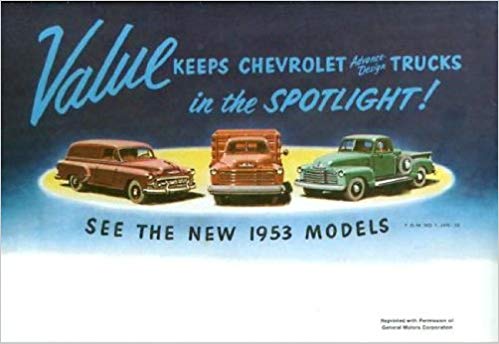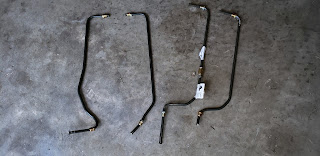It's an exciting time in the garage! I got started on some cleaning that needs to be done before I can start the disassembly of the driveline. This is necessary because of the design on the enclosed driveshaft. Unlike modern trucks, the driveshaft of the older trucks is enclosed in what's called a torque tube. All that means is that the driveshaft is inside of a protective pipe. In order to split the universal joint, you first have to unbolt a protective cover (called the universal ball) and slide it and the retaining collar backwards on the torque tube. Before you can slide them backwards, you need to make sure that the tube is relatively free of debris, as there isn't much clearance on the tube. Just to give you an idea of what my situation looked like, I took a few pics before starting the cleaning...
(rear of the universal ball / torque tube)
(universal ball with collar)
(side view of transmission rear and universal joint ball collar)
(transmission crossmember / universal ball and collar)
The pics pretty much speak for themselves! Or do they? Yes, that's a ton of oily crud. However, it's not just oil. There is more dirt/clay than oil. It's actually really interesting, in that the oily mud is still "wet" under the exterior dried film. Once I broke through the dried part, the rest came off with much less effort required. The process here is all physical labor with a small putty knife. The end result was a pile of oily mud on my drop cloth. After about 2 hours of sliding around under the Gray Ghost, the pile of debris looked like this:
It's hard to get an appreciation for just how much crud is in the pile. When I picked up the drop cloth, I'd estimate it weighed about 1.5 - 2.0 lbs!
After just scraping, everything looked like this:
Visible in the last pic is the transmission mount. After cleaning, I decided to take it off, as it needs to be removed before I can slide the collar back. Once I got it off of the truck, I realized that it was no longer serviceable. So, I'll either have to rebuild it or replace it. This is how it looked when I got it off of the truck:
Good Googly Moogly! That is a lot of crap! I'll clean it up (hello Super Clean!) and then make the call on rebuild or replace. Essentially, what's wrong is that there are supposed to be two rubber pieces between the plate and the bracket and both are completely gone! That means the transmission could move up and down, while still bolted to the mount. I'm sure that will mean a thorough inspection of the transmission bearings and seals is now required....
I know it's been a while since I last posted and I have a good reason for taking so long. I've been working on a woodworking project for some of my grandkids. It's almost done, but yesterday wasn't a good day to be doing woodworking, so into the garage I went. The project? They needed a dresser, Here it is after construction and before staining:
It's purpose built to fit a specific space. No plans, just worked backwards from the space requirements. Currently, the drawers are stained and done. Now the case needs to be stained. Hopefully, I'll get it finished soon and into service!
That's all for now. More to come as I continue to disassemble the driveline and get ready for the engine swap!












































